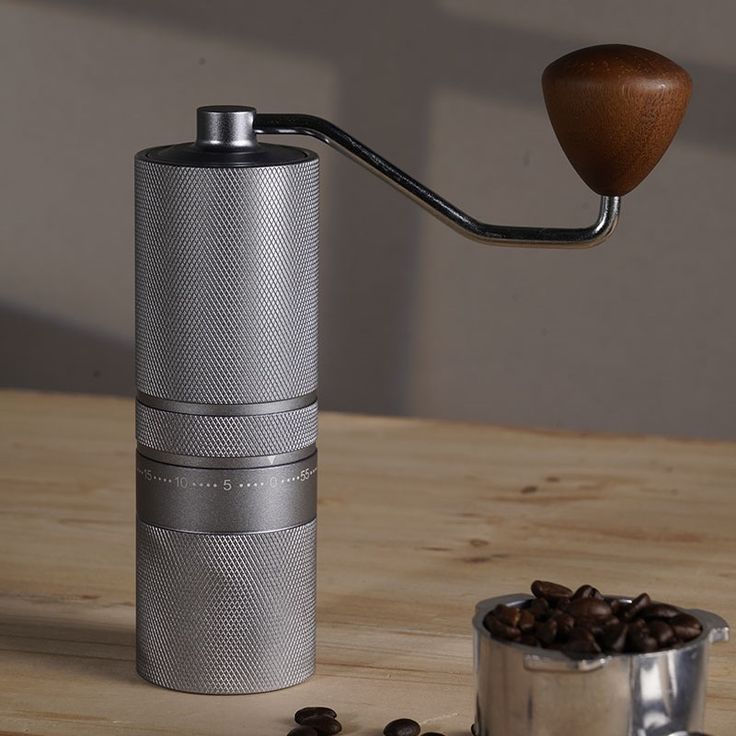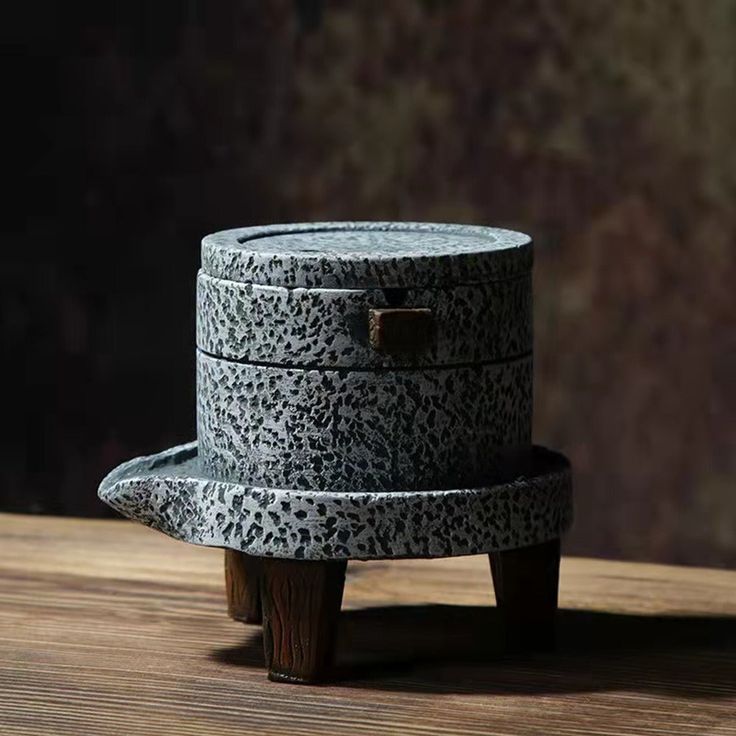The Freshness Factor: Why Grind Coffee Beans Yourself?
Grinding your own coffee beans enhances flavor and aroma. How to grind coffee without a grinder? Freshly crushed beans offer a superior taste compared to pre-ground options. This is because once coffee beans are ground, they start to oxidize and lose their freshness. Oxidation diminishes the unique notes in the coffee, such as fruity or nutty elements. By grinding beans yourself, you prevent this process. You capture the beans’ natural qualities right before brewing. It’s the same reason bakers recommend fresh flour and chefs advocate for freshly ground spices. Own your coffee experience from bean to cup and relish in the ritual of grinding. This fresh approach allows you to enjoy a more vivid and robust cup. Always aim for freshness in your coffee prep; it makes all the difference.

Tools at Your Disposal: Preparing to Grind Beans Without a Grinder
Before diving into the grinding process, let’s talk about the tools that can help you grind coffee without a grinder. Each tool provides a unique approach to crushing your coffee beans and may influence the final flavor profile of your brew.
- Mortar and Pestle: This classic tool allows for a hands-on approach, giving you full control over the grind size.
- Rolling Pin and Plastic Bag: An easy and accessible method requiring minimal equipment.
- Blender or Food Processor: Great for a quick grind, though care is needed to prevent heating the beans.
Select high-quality coffee beans aligned with your taste and suited to your chosen brewing method. You’ll also want a clean, flat surface to work on and some elbow grease if you’re using manual methods. Whichever tool you choose, remember that consistency in grind size is key to a delicious cup.
Using a mortar and pestle will give you a coarser grind, ideal for French press or cold brew. Rolling pins can yield a finer grind perfect for pour-over or drip coffee makers, provided you apply an even pressure. Blenders and food processors are more versatile but need careful attention to avoid uneven grinds or overheating.
No matter the method, grinding your coffee right before brewing ensures the freshest taste, capturing the beans’ natural flavors in your cup. Enjoy the process and the satisfaction of grinding your own beans without a grinder.
Method 1: Time-Tested Mortar and Pestle
Turning to a mortar and pestle, you engage in a classic and effective method of grinding coffee beans. This age-old technique has stood the test of time and offers you complete control over the grinding process. Unlike electric grinders that can overheat the beans or produce inconsistent sizes, the mortar and pestle allow you to achieve a more personal touch. It is especially ideal for obtaining a coarse grind, which is perfect for certain brewing styles like the French press, where a coarser texture enhances the flavor extraction.
Step-by-Step Process for Crushing Beans
First, place coffee beans into the mortar. Use the pestle with firm pressure to crush them. Grind in a circular motion until you reach the desired coarseness. Transfer the ground coffee to a container. Repeat the process as needed to get enough coffee for brewing.

Method 2: The Rolling Pin Technique
If you don’t have a grinder, the rolling pin method is simple and effective. This approach uses tools that are likely already in your kitchen, making it accessible and convenient. Here’s how you can grind coffee without a grinder using a rolling pin.
How to Achieve Consistency with a Rolling Pin
First, gather your tools: a rolling pin and a sturdy plastic bag or a clean towel. Place your coffee beans in the bag or on the towel. Make sure it is sealed or wrapped to prevent spillage. Start by gently crushing the beans with the rolling pin. Then, apply more pressure to break them down to your desired coarseness. Check the consistency of the grind and ensure evenness. If needed, adjust your technique, applying consistent pressure to achieve a uniform grind. This method is ideal for a medium-fine grind suitable for drip coffee makers.
Method 3: Utilizing a Blender or Food Processor
When a traditional coffee grinder is not on hand, you can turn to your kitchen appliances. A blender or food processor can act as an impromptu coffee grinder. This method works well for those who need to grind coffee quickly. Yet, extra care is needed to control the grind and prevent the beans from overheating.
Tips for Avoiding Overheating Your Coffee Beans
Grinding coffee with a blender or food processor is more than just pushing a button. The key is to grind in short bursts. Here are some tips to help you avoid overheating your coffee beans while using these appliances:
- Pulse Instead of Blend: Use the pulse function for better control. Pulse in short bursts to avoid continuous blade operation that heats the beans.
- Small Batches: Do not fill the blender or processor. Grind small amounts of beans to keep them moving freely.
- Cool Down: Give your device a break between batches. This prevents heat buildup that can affect the beans’ flavor.
- Shake or Stir: Occasionally shake the blender or stir the contents in the food processor. This helps to achieve a more even grind.
- Listen: Pay attention to the sound of the blades. If they change pitch, check the beans to prevent over-grinding.
Following these tips can help you maintain the integrity of your coffee’s flavor. Even without a grinder, achieving freshly ground coffee is possible. Remember to adjust your technique until you find the perfect grind for your brew.
Method 4: Stone Grinder (Sil Batta) ? An Ancient Approach
Using a Stone Grinder, also known as Sil Batta, offers a traditional touch to grinding coffee beans. This age-old method involves a rectangular flat-shaped stone and a cylindrical roller, both made from natural stone. It’s an artisanal method favored in many cultures for its simplicity and reliability.
Advantages of Using a Stone Grinder
The Sil Batta method guards the coffee’s flavor and aroma effectively. Here’s how it stands out:
- Preserves Natural Flavors: The slow grinding doesn’t heat the beans, maintaining their natural oils and aroma.
- Customizable Grind Size: You can control the grind size by applying different pressures and grinding speeds.
- Engaging Process: It is a hands-on, meditative process that adds to the ritual of coffee preparation.
- No Electricity Required: It’s ideal for off-grid situations or when you want to conserve energy.
This method not only grinds the beans effectively but also connects you with a time-honored tradition, enhancing the overall experience of brewing coffee.

Exploring the Impact of Grind Size on Coffee Flavor
The grind size of coffee beans significantly impacts their flavor profile. Larger, coarser grinds create a lighter, slower brew, allowing water to flow through easily. This method is perfect for French press or cold brew as it avoids over-extraction. Fine grinds, on the other hand, are ideal for espresso. The smaller particle size ensures a rich, bold flavor due to the expanded surface area. This allows water to extract flavors and oils more effectively during the brewing process.
Matching Grind Size to Brewing Methods
Selecting the appropriate grind size for your brewing method is crucial. A coarse grind works well with slower brewing methods like the French press, reducing bitterness and improving overall flavor. Medium grinds are suitable for drip coffee makers. They balance extraction speed and surface area to enhance flavor without bitterness. For espresso, a fine grind is necessary. It ensures a rich, concentrated flavor profile by maximizing the water’s contact with the coffee grounds. Knowing how to match the grind size with your preferred brewing method can elevate your coffee experience.
Final Thoughts: Perfecting Your Home Coffee Grinding Technique
Perfecting your coffee grinding technique at home doesn’t require fancy equipment. You can grind coffee without a grinder and still achieve an exceptional brew. The key is in understanding the effect of grind size on flavor and matching it to your brew method.
Take time to experiment with different techniques. Whether you’re using a mortar and pestle, a rolling pin, a blender, or a stone grinder, there’s satisfaction in mastering a method that works for you. Remember, each tool offers a unique grind and can influence your coffee’s taste.
Aim for an even and consistent grind size for the best results. This ensures maximum flavor extraction without the bitterness of over-extracted brews. Adjust your technique as you learn the nuances of each method. This can lead to a more personalized and fulfilling coffee experience.
Grinding coffee beans manually also allows for mindfulness in preparation. You become more involved in the coffee-making process. This not only enhances the flavor but also your appreciation for the craft.
Lastly, share your coffee grinding discoveries with friends and fellow coffee lovers. Exchange tips and celebrate the rich journey from whole bean to the perfect cup. Embrace the joy of coffee making, even without a grinder, and brew better every day.